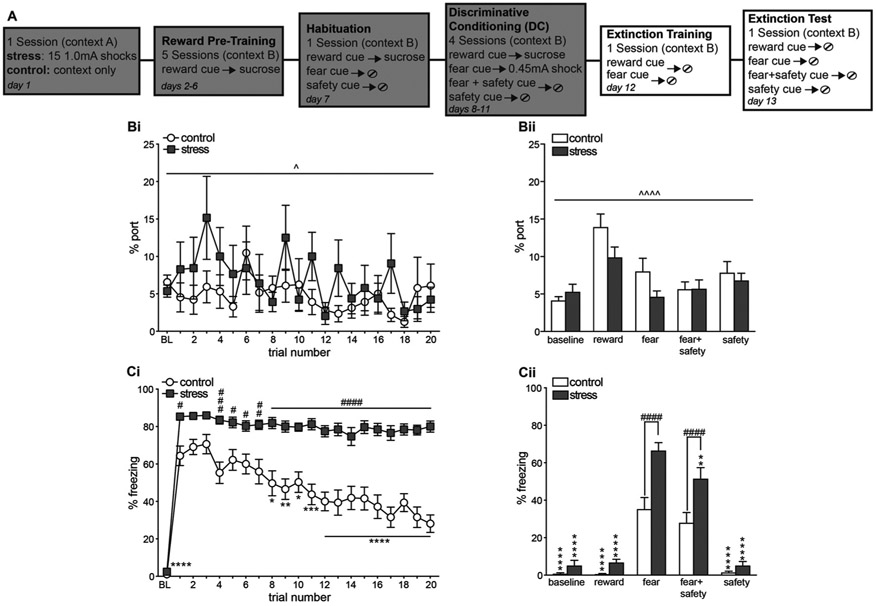Fig. 4.
Prior stress impaired subsequent fear extinction. (A) Schematic depicting experimental outline. One day after DC4 all rats received 1 session of extinction training in which both the fear and reward cues were extinguished within the same session. One day later all rats received an extinction test where all cues were presented. (Bi) Averaged percent time spent in the port during each reward cue presentation during extinction training as well as a 5 min baseline (BL) period at the beginning of the session. Main effect of trial ^p < 0.05. (Bii) Averaged percent time spent in the port during each cue 1 day after extinction training. Main effect of cue ^^^^p < 0.0001. (Ci) Averaged percent time spent freezing during each fear cue presentation during extinction training as well as a 5 min baseline (BL) period at the beginning of the session. Compared to trial 1, control animals showed significantly reduced freezing during trials 8–20 (*p < 0.05, **p < 0.01, ***p < 0.001, ****p < 0.0001). Freezing levels in the stress group did not significantly decrease at any time point. The stress group also showed significantly higher freezing levels than the control group for every trial except trials 2 and 3 (#p < 0.05, ##p < 0.01, ###p < 0.001, ####p < 0.0001). (Cii) Averaged percent time spent freezing during each cue 1 day after extinction training. Freezing in the stress group was significantly higher than controls during the fear and fear + safety cues (####p < 0.0001). The stress group also showed significantly lower freezing to all cues compared to the fear cue (**p < 0.01, ****p < 0.0001), indicating intact conditioned inhibition. Means +/− SEM.

